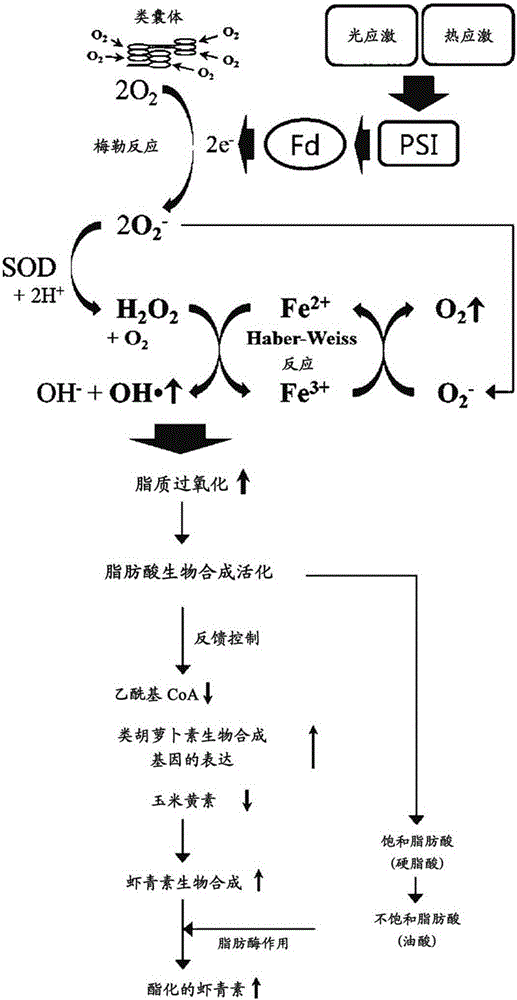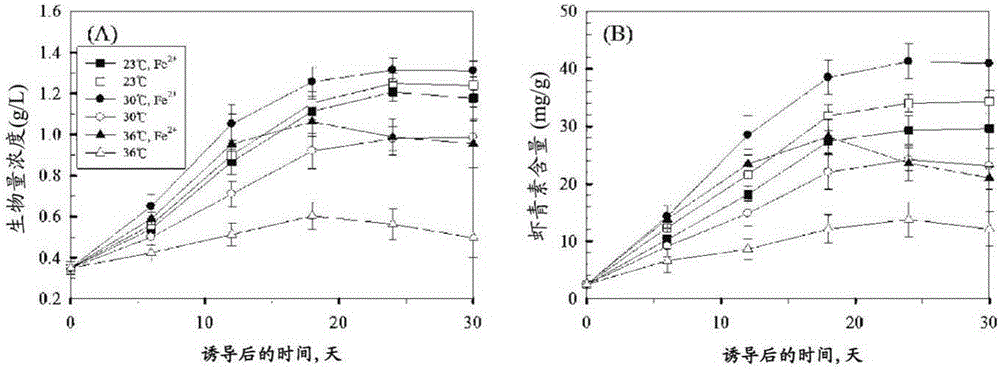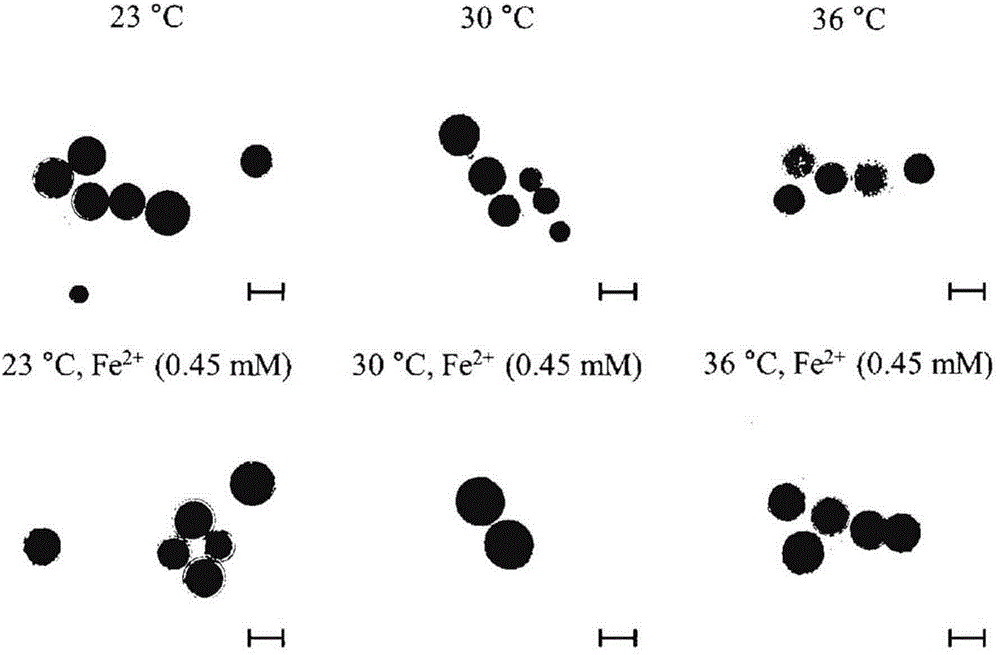Method for increasing production of astaxanthin in haematococcus pluvialis by mature spore inoculation and iron ion-mediated Harber-Weiss reaction at high temperature
A technology of Haematococcus pluvialis and astaxanthin, applied in biochemical equipment and methods, microorganisms, single-cell algae, etc., can solve problems such as high energy costs
- Summary
- Abstract
- Description
- Claims
- Application Information
AI Technical Summary
Problems solved by technology
Method used
Image
Examples
Embodiment 1
[0062] Example 1: Effects of various high-temperature culture conditions and iron ion-mediated Haber-Weiss reaction on the accumulation of astaxanthin and biomass in Haematococcus pluvialis under autotrophic conditions
[0063] To examine the effects of various high-temperature culture conditions and iron ion-mediated Haber-Weiss reaction on the accumulation of astaxanthin and biomass in Haematococcus pluvialis under autotrophic conditions, the following experiments were performed.
[0064] In NIES-C medium lacking an organic carbon source, low-intensity light (20 μE / m 2 / s) and only carbon dioxide as a single carbon source for culturing cells. When the exponential phase was reached, the cells in the medium (OD 680 = about 0.8) was transferred to NIES-N medium to inhibit the growth of cells, and the amount of biomass and the degree of accumulation of astaxanthin were analyzed for 18 days under each of the following conditions: general room temperature culture conditions (23 °...
Embodiment 2
[0072] Example 2: Intracellular reactive oxygen species content, SOD in the initial stage of astaxanthin synthesis in Haematococcus pluvialis under various high temperature culture conditions and iron ion-mediated Haber-Weiss reaction under autotrophic conditions Effects of Activity, Lipid Oxidation and Carotenoid Content
[0073] In order to examine the inhibition of astaxanthin biosynthesis in Haematococcus pluvialis at high temperature under autotrophic conditions, the following experiments were performed.
[0074] First, low-intensity light (20 μE / m 2 / s) and only carbon dioxide as a single carbon source for culturing cells. When the exponential phase was reached, the cells in the medium (OD 680 = about 0.8) was transferred to NIES-N medium to inhibit the growth of cells, and intracellular reactive oxygen species content (DCF content), SOD activity was analyzed during 2 days of culture in each of the following astaxanthin synthesis conditions , lipid oxidation degree (M...
Embodiment 3
[0078] Example 3: O at room temperature (23°C) under autotrophic conditions 2 - Effects of the artificial generation and iron-mediated Haber-Weiss reaction on intracellular astaxanthin accumulation in the initial stage of astaxanthin synthesis in Haematococcus pluvialis
[0079] To examine LROS (O 2 - and H 2 o 2 ) to increase the inhibition of astaxanthin synthesis, the following experiments were carried out. In NIES-C medium lacking an organic carbon source, low-intensity light (20 μE / m 2 / s) and only carbon dioxide as a single carbon source for culturing cells. When the exponential phase was reached, the cells in the medium (OD 680 = about 0.8) was transferred to NIES-N medium to inhibit cell growth, and various concentrations (10 -11 to 10 -7 M) methyl viologen together with strong light (150μE / m 2 / s) added to cells to artificially generate O 2 - . In addition, the degree of astaxanthin accumulation in the cells was analyzed at 4 days of culture under each of...
PUM
 Login to View More
Login to View More Abstract
Description
Claims
Application Information
 Login to View More
Login to View More - Generate Ideas
- Intellectual Property
- Life Sciences
- Materials
- Tech Scout
- Unparalleled Data Quality
- Higher Quality Content
- 60% Fewer Hallucinations
Browse by: Latest US Patents, China's latest patents, Technical Efficacy Thesaurus, Application Domain, Technology Topic, Popular Technical Reports.
© 2025 PatSnap. All rights reserved.Legal|Privacy policy|Modern Slavery Act Transparency Statement|Sitemap|About US| Contact US: help@patsnap.com



